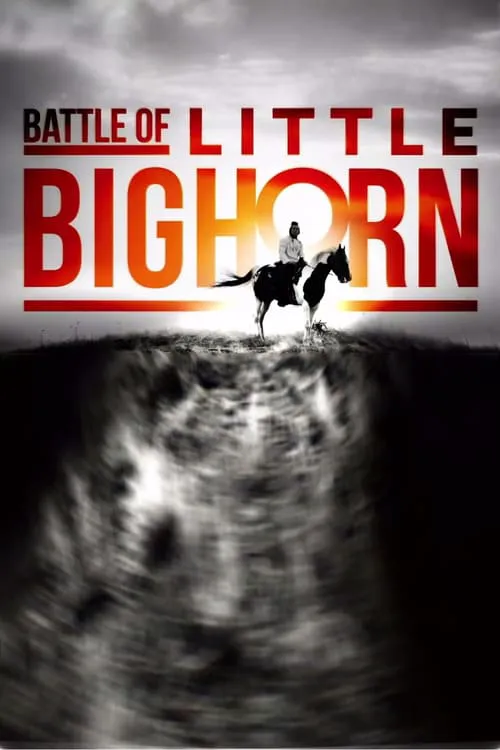Battle of Little Bighorn

Intrigue
The film "Custer's Last Stand: Battle of Little Bighorn" - or sometimes referred to in the context of documentaries and documentaries-like films as simply 'Battle of Little Bighorn' - takes the audience on a historical expedition through an intricate, well-documented period in American history that is shrouded in controversy, myth, and legend. The movie sets its focus firmly on the pivotal event of June 25, 1876, when the combined forces of the Lakota, Cheyenne, and Arapaho tribes clashed against the 7th Cavalry Regiment under the command of Lt. Col. George Armstrong Custer. While the outcome of this confrontation has long been etched in American popular culture as a catastrophic defeat for the US military at the hands of an "inferior" Native American force, the film delves deeper into a far more complex narrative of motivations, misunderstandings, and circumstances that would ultimately seal the fate of Lt. Col. Custer and his troops. As we are transported through the chronology of events leading up to the Battle of the Little Bighorn, 'Battle of Little Bighorn' meticulously reconstructs the intricate dance of power plays and negotiations between the U.S. government and the Lakota people. We witness a sequence of events that span several years, during which the federal government steadily encroached upon the reservations of the Lakota people, compelling them to relocate to smaller, more impoverished lands. This systematic erosion of Lakota land and resources fueled a deep-seated determination for self-preservation and resistance, which would ultimately culminate in the Battle of the Little Bighorn. Through a combination of dramatic reenactments, interviews with Native American historians and cultural advocates, and expert historical analysis, 'Battle of Little Bighorn' masterfully humanizes both the protagonists and antagonists of this pivotal event, exposing a nuanced landscape of conflicting interests and motivations that have often been lost in the fog of mythology. We see how Lt. Col. Custer, a flamboyant figure often reduced to a one-dimensional caricature, emerges as a complex and sometimes self-serving individual with his own set of strategic calculations and personal ambitions. His desire to secure a hero's legacy has long been recognized as a motivating factor behind his actions during the Battle, but 'Battle of Little Bighorn' goes further to uncover a broader cultural context that contributed to Custer's reckless and ill-fated decision-making. On the other side of the conflict, we meet the enigmatic figure of Crazy Horse, the revered leader of the Lakota people, who embodies the fierce resistance of his people against encroaching U.S. forces. Yet, despite his formidable stature, Crazy Horse's character in the film is revealed to be one of measured caution and strategic diplomacy, who consistently advocates for peaceful coexistence with the U.S. government. His tragic fate - as one of the few prominent Lakota leaders who perished on that infamous battlefield - adds a poignant dimension to the narrative, underscoring the devastating consequences of a conflict that would shatter the dreams of a generation. Throughout the film, we encounter an impressive range of historical sources, including interviews with family members of veterans and soldiers of the 7th Cavalry, whose personal accounts offer searing first-hand accounts of the horrors of that fateful day. These first-hand accounts provide a visceral, almost cinematic experience that allows the audience to intimately understand the scale of human emotion and suffering during and after the Battle. In the aftermath of the defeat of the 7th Cavalry Regiment, the myth of "Custer's Last Stand" spread rapidly across American popular culture, where it has persisted for over a century. The image of a gallant but doomed cavalry unit, surrounded by a seemingly endless host of Native American warriors, became a deeply ingrained trope of American mythology, reinforcing the notion of the Native American as an exotic, primitive "other." As 'Battle of Little Bighorn' so convincingly demonstrates, however, this simplistic narrative is both a product and a perpetrator of deeper historical misunderstandings. By humanizing the figures and forces that converged on the Little Bighorn battlefield, the film masterfully peels back the layers of mythology, laying bare a far more complex and multilayered history that refuses to be reduced to simplistic caricatures or binary narratives. Ultimately, the film invites the viewer to partake in a more profound conversation about the very nature of history itself. We are reminded that the events of the past are not frozen in time, but rather serve as a dynamic and evolving cultural legacy that continues to shape our collective identity. As the film so aptly puts it, the Battle of the Little Bighorn serves as a testament to "the resilience and determination of a people fighting to preserve their way of life in the face of overwhelming odds." Through its meticulous research, engaging storytelling, and thoughtful reflection, 'Battle of Little Bighorn' thus emerges as a landmark historical document that reclaims the complexities of a pivotal event often reduced to simplistic or sensationalistic narratives. Rather than reinforcing the tired tropes of American mythology, the film offers a corrective vision that restores humanity to the individuals involved, underscoring the power of storytelling to redefine our understanding of the past - and ourselves.
Critiques
Recommandations




